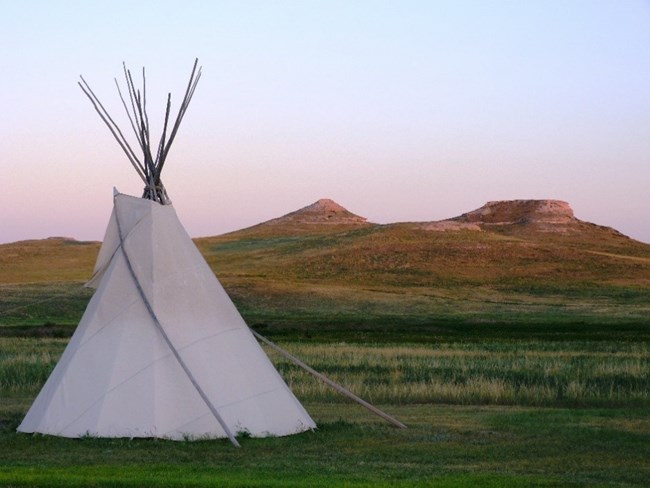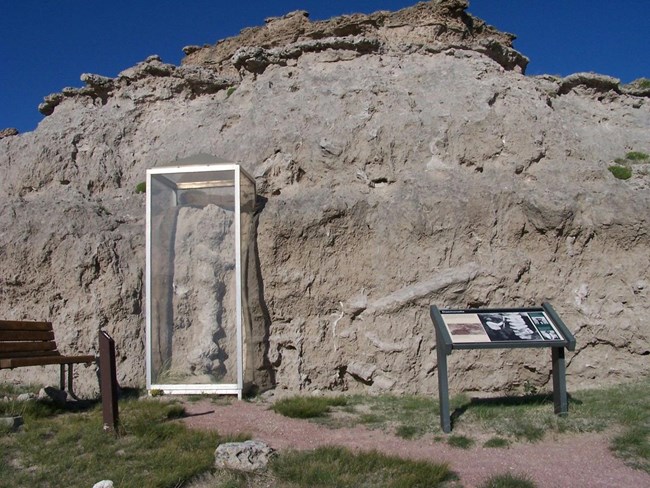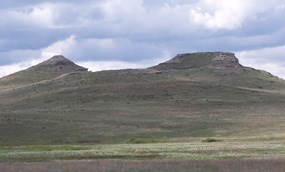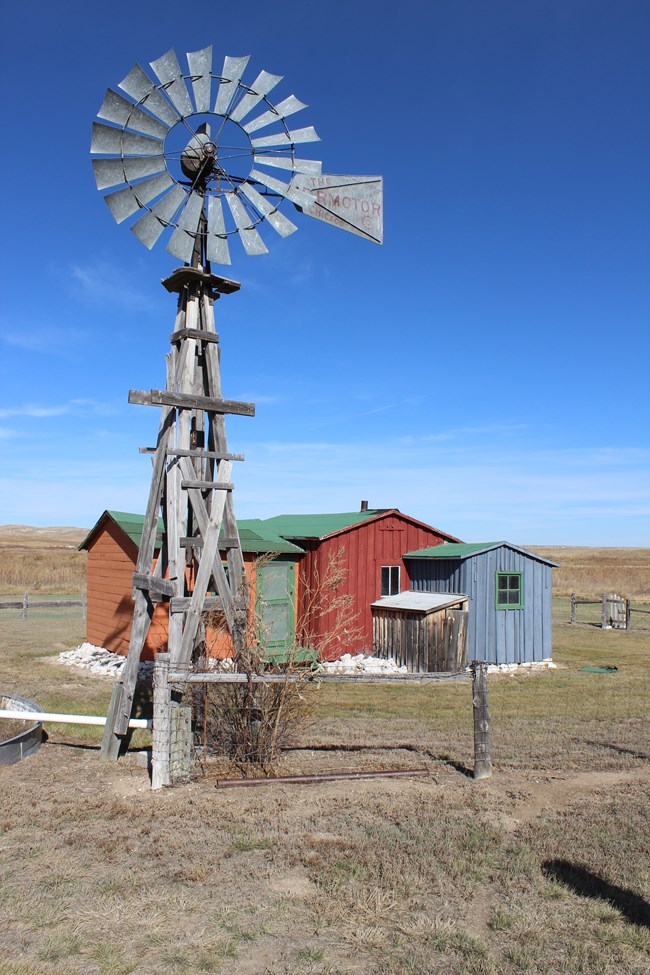
NPS Photo Get out and stretch your legs during your road trip through the plains!
Paper trail guides are available in the visitor center or download the NPS App before you visit and with our free visitor center WiFi. 
NPS Photo This one-mile (1.6 km) trail at the west entrance is a tour through time. Two displays highlight the fascinating spiral burrows of the Paleocastor -- an ancient dry-land beaver. On the way up the trail to these "Devil's Corkscrews," you'll see ancient petrified sand dunes. Beyond them, look carefully at the bluffs around you for "Paleosols": fossilized roots, insect holes and small rodent burrows. These give scientists a rare glimpse of the ecological context that the fossilized animals lived in. And it lets us track how changes in Earth's climate impact mammals across time... including today. 
NPS Photo This 2.8-mile (4.3-km) accessible concrete trail begins at the visitor center just past the tipis. It passes through native wetlands, over the Niobrara River -- a surprisingly small stream at this end of its course -- and up about 300 feet through restored mixed grass prairies. At the top of the hills (about 250 feet elevation gain), you will find signage pointing out menoceras tracks, paleosols, Beardog den sites, and the historic excavation sites. It was on these hills that future local rancher James Cook discovered fossilized bones in the mid 1880s. Excavations didn't commence until nearly twenty years later, following a 1904 visit by Olaf A. Peterson, a paleontologist from the Carnegie Museum in Pittsburgh, Pennsylvania. 
NPS Photo The Bone CabinAbout midway between the visitor center and Fossil Hills is an unpaved one-mile side trail that leads west to Harold J. Cook's homestead cabin. Restored to what it looked like in 1910, while Harold and his wife Eleanor still lived there, the "Bone" cabin was used after 1914 as the temporary residence for scientists who worked the fossil quarries. The American Museum of Natural History's lead excavator, Albert "Bill" Thomson, lived there whenever conducting field work in the bonebed in the late 1910s and early 1920s. |
Last updated: May 31, 2024
